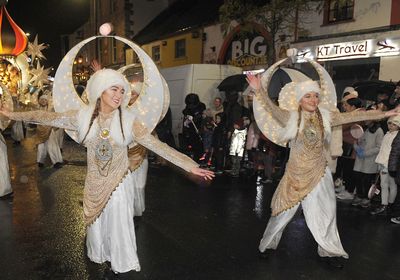News
Phoenix was once a small farming town. See how the city grew up in these historical photos
M.Green25 min ago
The 20th century in metro Phoenix was marked by major growth and change. The population of Arizona in 1900 was just 122,931 residents. By the end of the century , the population of metro Phoenix alone was nearly 3 million people as whole neighborhoods of tiled homes were being carved out of the farmland and desert The Arizona Republic, which began publishing in 1890, was there to document every pivotal moment of the century. Republic photographers and archives show how metro Phoenix evolved from small farming communities into a massive metropolitan area. Take a step back in time to see how metro Phoenix grew from small dirt road outposts into the sprawling concrete jungle we know today. Take a step back in time to see what the 1900s looked like in the Grand Canyon State, including the development of railroads, flooding and other historical events. The Arizona Republic archives show what the 1910s were like in metro Phoenix, including a visit from Theodore Roosevelt, early scenes of downtown Phoenix and the construction of historic hotels. The 1920s were a decade of change , often remembered as the Jazz Age or Roaring 20s. WWI ended in 1918. Prohibition started in 1920, outlawing the making and sale of alcohol across the country. The end of the decade was marked by the stock market crash and the start of the Great Depression. See what the decade looked like in Arizona. The 1930s were a tumultuous time in the United States. Events like the Great Depression and World War II that played out on a national and global scale also greatly affected Arizona, and it's visible in historical photos from The Arizona Republic archives. The Arizona Republic collected some of the best images of the 1940s from staff photographers and other sources, giving readers a glimpse at life in metro Phoenix, from farming to downtown stores and new roads. The prosperity Phoenix saw during the '50s remains unmatched to this day. Phoenix was a farming town with an area of about 17.1 square miles and a population of 106,000, which placed it 99th among American cities. By the end of the decade, the city's area grew more than 10 times bigger to 187.6 square miles and its population quadrupled, reaching 439,000 people. Much of the city's suburban growth occurred during the 1960s. By the end of the decade, Phoenix was well consolidated as a metropolitan area, with continuous, unabated growth. Here's a peek at what life in the Valley was like in the age of Barry Goldwater, rock-n-roll, and the hippie movement. In the 1970s, Phoenix was submerged underwater, leadership diversified, mafia influence was discovered, and college football gained popularity. See what the decade looked like in Arizona. The 1980s were a time of growth in Phoenix. The I-10 Deck Park Tunnel was under construction and Phoenix malls were the spot to be. See for yourself. Here's a glimpse into a decade that challenged metro Phoenix's resilience, ushered in some of the Valley's most iconic infrastructure, and witnessed record-breaking weather events Arizona Republic reporter Laura Daniella Sepulveda contributed to this .
Read the full article:https://www.yahoo.com/news/phoenix-once-small-farming-town-120316985.html
0 Comments
0










